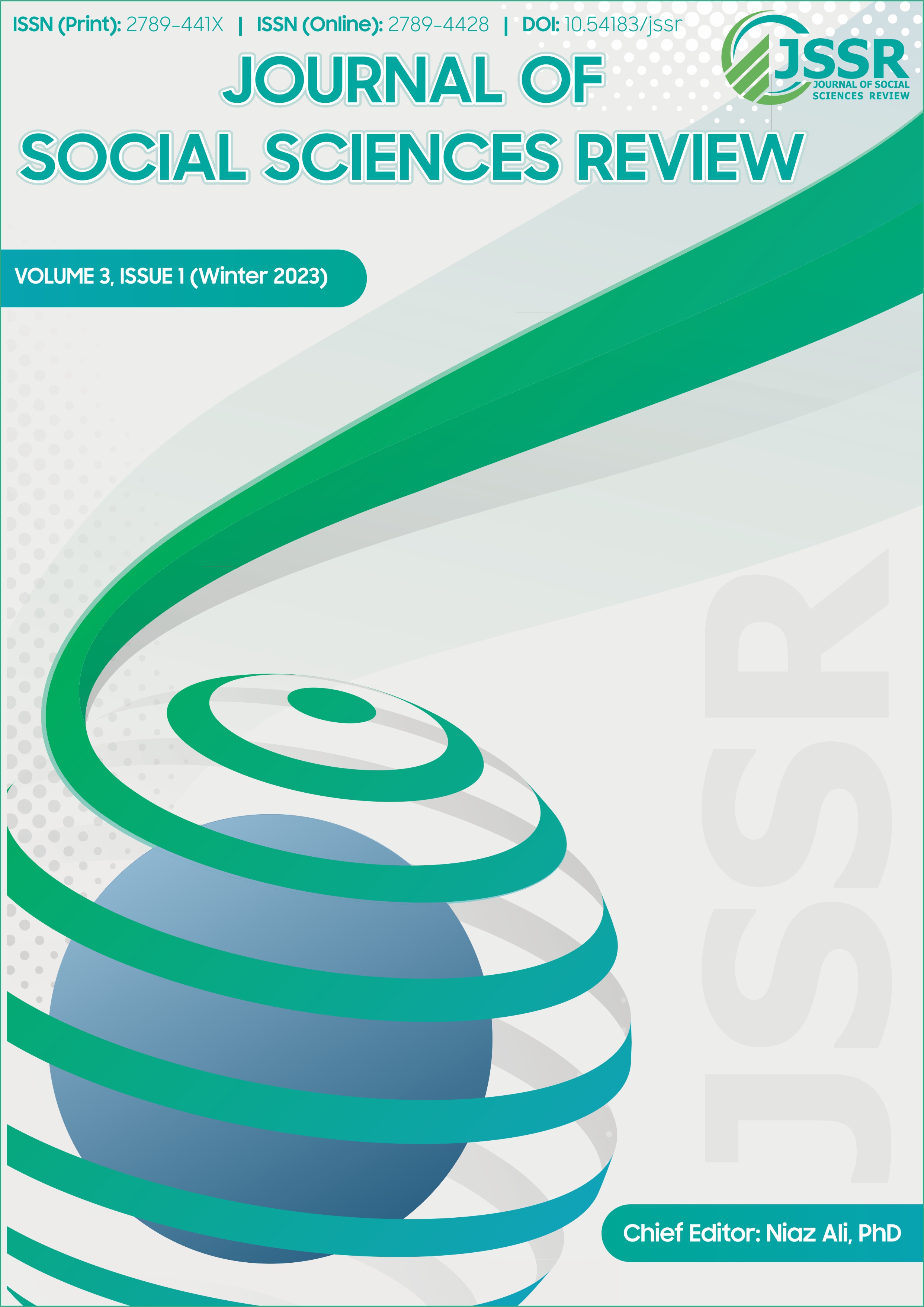Addressing the Digital Divide: Access and Use of Technology in Education
DOI:
https://doi.org/10.54183/jssr.v3i2.326Keywords:
Digital Divide, Technology, EducationAbstract
The digital divide, characterized by disparities in access to and use of technology, presents a significant challenge in education. This study aims to investigate the impact of the digital divide on students' access to technology and its influence on their educational outcomes. A quantitative research methodology was employed, with a sample size of 400 students from diverse educational backgrounds. The study utilized survey questionnaires to gather data on internet access, device ownership, and technology use in education. The findings revealed variations in internet access across different age groups, with younger individuals having higher levels of access compared to older age groups. Additionally, disparities in household internet access were observed between rural and urban areas, with rural areas experiencing lower connectivity. Gender-based differences in personal device ownership were also evident, highlighting potential gender-related digital divides. Moreover, students from low-income households faced lower levels of internet access, indicating a socioeconomic divide in technology access. Additionally, the study emphasizes the importance of establishing technology resource centers in schools and fostering public-private partnerships to bridge the technology gap in education. The study contributes to the existing body of knowledge by providing insights into the digital divide and offering recommendations for addressing this issue in the field of education.
References
Bolt, D. & Crawford, R. (2000). Digital divide: Computers and our children's future. TV Books LLC, New York.
Bilal, D., & Kirby, J. (2002). Differences and similarities in information seeking: Children and adults as web users. Information Processing & Management, 38(5), 649-670. https://doi.org/10.1016/s0306-4573(01)00057-7
Bilal, D. (2002). Perspectives on children’s navigation of the World Wide Web: Does the type of search task make a difference? Online Information Review, 26(2), 108-117. https://doi.org/10.1108/14684520210425376
Byström, K. (2002). Information and information sources in tasks of varying complexity. Journal of the American Society for Information Science and Technology, 53(7), 581-591. https://doi.org/10.1002/asi.10064
Cronin, B. (2002). The digital divide. Library Journal, 127(3), 48.
Cullen, R. (2001). Addressing the digital divide. Online Information Review, 25(5), 311-320. https://doi.org/10.1108/14684520110410517
Eastin, M. S., & LaRose, R. (2006). Internet self-efficacy and the psychology of the digital divide. Journal of Computer-Mediated Communication, 6(1), 0-0. https://doi.org/10.1111/j.1083-6101.2000.tb00110.x
Ford, N., Wilson, T., Foster, A., Ellis, D., & Spink, A. (2002). Information seeking and mediated searching. Part 4. Cognitive styles in information seeking. Journal of the American Society for Information Science and Technology, 53(9), 728-735. https://doi.org/10.1002/asi.10084
Gaillard, F. D. (2001). Understanding the digital divide as it relates to electronic commerce. Unpublished doctoral dissertation, Old Dominion University
Hargittai, E. (2002). Second-level digital divide: Differences in people's online skills. First Monday, 7(4). https://doi.org/10.5210/fm.v7i4.942
Hansen, P., & Järvelin, K. (2005). Collaborative information retrieval in an information-intensive domain. Information Processing & Management, 41(5), 1101-1119. https://doi.org/10.1016/j.ipm.2004.04.016
Kuhlthau, C. C. (1991). Inside the search process: Information seeking from the user's perspective. Journal of the American Society for Information Science, 42(5), 361-371. https://doi.org/10.1002/(sici)1097-4571(199106)42:5<361::aid-asi6>3.0.co;2-#
Kuhlthau, C., & Tama, S. (2001). Information search process of lawyers: A call for ’just for me’ information services. Journal of Documentation, 57(1), 25-43. https://doi.org/10.1108/eum0000000007076
Light, J. (2001). Rethinking the digital divide. Harvard Educational Review, 71(4), 709-734. https://doi.org/10.17763/haer.71.4.342x36742j2w4q82
Mitchell, M. (2002). Exploring the future of the digital divide through ethnographic futures research. First Monday. https://doi.org/10.5210/fm.v7i11.1004
Pearson, T. (2002). Falling Behind: A Technology Crisis Facing Minority Students. TechTrends: Linking Research and Practice to Improve Learning, 46(2), 15-20. https://www.learntechlib.org/p/95168/.
Savolainen, R. (2002). Network competence and information seeking on the internet. Journal of Docu
mentation, 58(2), 211-226. https://doi.org/10.1108/00220410210425467
Spink, A., & Cole, C. (2004). Introduction. Journal of the American Society for Information Science and Technology, 55(9), 767-768. https://doi.org/10.1002/asi.20020
Spink, A., Wolfram, D., Jansen, M. B., & Saracevic, T. (2001). Searching the web: The public and their queries. Journal of the American Society for Information Science and Technology, 52(3), 226-234. https://doi.org/10.1002/1097-4571(2000)9999:9999<::aid-asi1591>3.0.co;2-r
Warschauer, M. (2002). Reconceptualizing the digital divide. First Monday, 7(7). https://doi.org/10.5210/fm.v7i7.967
World Telecommunication Development Reports (1998; 2002). Geneva: ITU (International Telecommunication Union) http://www.itu.int/ITU-D/ict/publications/wtdr_02/
Downloads
Published
Issue
Section
License
Copyright (c) 2023 Copyright in the Journal of Social Sciences Review is retained by the author(s). Authors also grant any third party the right to use the article freely as long as its integrity is maintained and its original authors, citation details and publisher are identified.

This work is licensed under a Creative Commons Attribution-NonCommercial 4.0 International License.
SSR's Editorial Board shares the vision of providing free access to information, education, and science for everyone, thus promoting its content through an OPEN ACCESS POLICY, fulfilling the DOAJ definition of open access. The JSSR adheres to an Open Access and Copyright Licensing Policy based on the belief that making research freely accessible to the public promotes greater global knowledge sharing.
The JSSR uses the Creative Commons Attribution-NonCommercial 4.0 International License. The authors who apply and publish in JSSR consent to abide by the copyright policy set out in the Creative Commons 4.0 license (Attribution-NonCommercial 4.0 International license).
- Copyright in the Journal of Social Sciences Review is retained by the author(s).
- Authors also grant any third party the right to use the article freely as long as its integrity is maintained and its original authors, citation details and publisher are identified.
While "By 'open access' to this literature, we mean its free availability on the public internet, permitting any users to read, download, copy, distribute, print, search, or link to the full texts of these articles, crawl them for indexing, pass them as data to software, or use them for any other lawful purpose, without financial, legal, or technical barriers other than those inseparable from gaining access to the internet itself."



